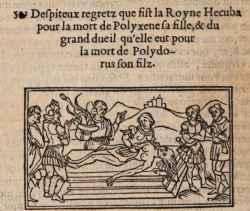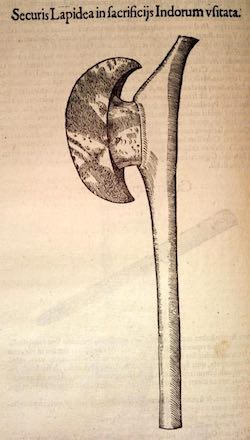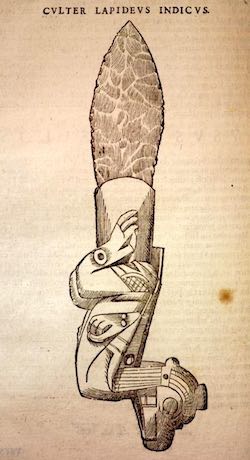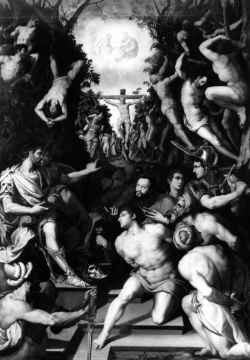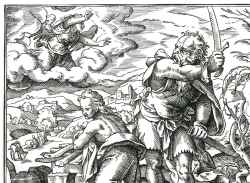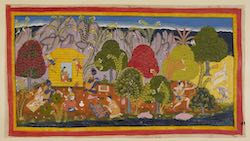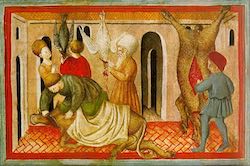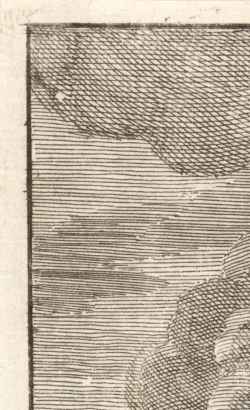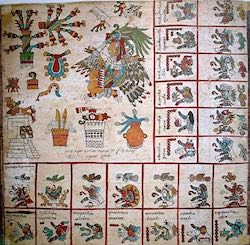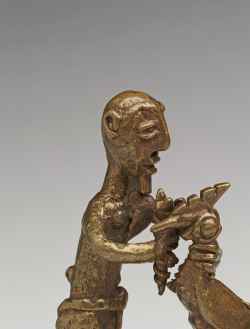Topic: 2. Sacrifice and religion: Comparisons, Antiquarians, Anthropology (16th-18th Century)
Religious sacrifices across various cultures and contexts sparked widespread interest in Early Modern Europe. As Christianity expanded into regions inhabited by "infidels" and "pagans", Europeans encountered a diverse array of sacrificial customs, ranging from the Sati rituals in India to the Aztec sacrifices in the Americas. This cross-cultural exposure captivated a wide audience, including theologians, philosophers, political thinkers, antiquarians, orientalists, missionaries, poets, artists, and even the general public. These encounters broadened the European understanding of sacrifice and led to a critical reassessment of classical and biblical sacrificial rites. This section includes:
- Sources: A selection of early modern printed materials, which include descriptions of the Americas, Asia, and Africa, alongside antiquarian and philological studies on religious sacrifice in classical antiquity and beyond. It also presents early modern works of ethnological observations and the first attempts to compare different sacrificial practices in various traditions and contexts, laying the groundwork for disciplines like the history of religions and anthropology.
- Iconographic Representations: A rich collection of images from the 16th to 18th centuries, illustrating a range of sacrificial rituals and practices as seen in different cultural and geographical contexts.
- Related Bibliography: An extensive bibliography spanning scholarly works from the 19th to 21st centuries, providing contemporary analyses and interpretations of these early studies and observations.
Neoptolemus sacrificing Polyxena at Achilles's tomb (1539)
from: Ovid, Metamorphoses, Paris 1539 (Denys Janot), Vol. 3, p. 150
Persons bringing sacrifices to Hercules (1629)
from: Philostratus of Lemnos. Les images ou tableaux de platte peinture des deux Philostrates, sophistes grecs, et les Statues de Callistrate, tr. Blaise de Vigenère. Paris. 1629, p. 494.
The Warburg Institute, London
The Women Sacrificing an Ass to Priapus (1553)
Museum Boymans van Beuningen, Rotterdam
Shepherd sacrificing Ram
from: Book of Meshal Ha-Kadmoni (from Germany)
Munich, Bayerische Staatsbibliothek, Cod. hebr. 107 (Steinschneider 1895, No. 107), fol. 24
Sacrificial Knife (1648)
from: Aldrovandi, Ulisse, Musaeum metallicum, Bologna, 1648, p. 158
Sacrificial Knife (1648)
from: Aldrovandi, Ulisse, Musaeum metallicum, Bologna, 1648, p. 156
I diecimila martiri del monte Ararat (1574)
from: Fondazione Federico Zeri
Chiesa di Santo Spirito, Firenze
Joachim's Sacrifice (18th Century)
Staedel Museum, Frankfurt am Main
Prior to taking up their abode in the hut, oblations have to be made to the presiding deities. Lakṣmaṇa hunts deer on the right, and returns to the hut to cook it; Rāma offers part of it as a sacrifice. The two brothers then eat, while Sītā waves a scarf over the food to keep the flies off, and she then retires to the hut to eat her own meal. The three begin their lives in exile in the peace of Citrakūṭa (ca 1653)
from: Ramayana, [ms Add. 15296(1), fol. 71]
British Library, London [from Udaipur]
15th c. depiction of Jewish ritual slaughter of animals for consumption (15th)
from: Jacob b. Asher, Arba'ah Turim (Hebrew: אַרְבָּעָה טוּרִים)
Biblioteca Apostolica Vaticana, Cod. Ross. 555. fol. 127v
A Gentoo Woman Burning herself (1768)
from: Cavendish Drake, E. A, Universal Collection of Authentic and Entertaining Voyages and Travels, London, J. Cooke, 1768
A Gentoo Woman Burning Herself (1770)
http://www.columbia.edu/itc/mealac/pritchett/00routesdata/1800_1899/hinduism/sati/sati.html
A jewish Sacrifice (P. Cunaeus, La république des Hébreux) (1705)
from: Title page of: P. Cunaeus, La république des Hébreux. Où il est traité au long & à fond de la Sacrificature Mosaïque, des divers Sacrifices de l' Ancienne Loi, & des Cérémonies avec lesquelles lis étoient offerts, Amsterdam, Mortier, 1705
A Man Burnt Alive during a Sacrifice (1572)
from: Codex Cozcatzin, c. 26r
Bibliothèque Nationale de France, Paris
A Man Sacrificed on an Aztec Pyramid [1501 - 1525]
from: Codex Borbonicus
Bibliothèque de l'Assemblée Nationale, Paris
a man sacrificing a fowl to one of the best known charms among the Akan, the nkabere charm. (18th-20th)
from: Ghana (The Kyekyere Nkabere charm (lit. to tie or bind the nkabere) was a common rite carried out throughout the Asante region during the pre-colonial and early colonial era).
British Museum, London
A mountain city with multistoried hill architecture. Outside the gates on the right is a Saivite shrine with a lingum covered by floral offerings to which a goat is led, probably for sacrifice. (17th)
from: Unidentified Hindu chronicle of a King
Metropolitan Museum, New York

